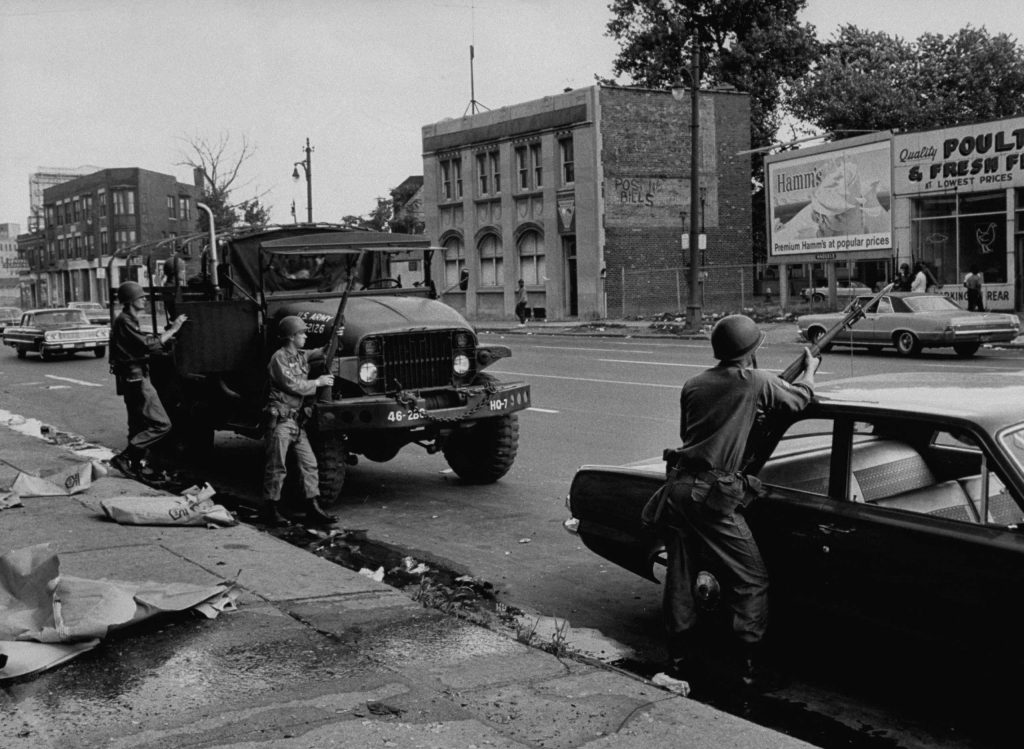Few movies are as polarizing as Stanley Kubrick’s sui generis 1968 sci-fi opus, 2001: A Space Odyssey. A good number of film critics and movie buffs argue that it’s an indispensable cinematic masterwork. Others admire its technical brilliance and the uncompromising strength of Kubrick’s vision, but find the movie’s impenetrable philosophy—whatever it might be—forbidding, or off-putting, or both. And then there are those (few, and not terribly convincing) naysayers who deride 2001 as little more than self-absorbed, emotionally sterile twaddle not far removed from an elaborate, unfunny hoax.
But even the film’s most strident critics acknowledge that there’s something about Kubrick’s strange, insular onscreen universe that commands our attention.
Here, LIFE.com offers a series of photos from the set of 2001 pictures that suggest the astonishing lengths to which Kubrick was willing to go in order to make his vision a reality. That the futuristic technology he envisioned feels authentic today speaks volumes about the man’s intellect, his dedication to the details of his craft and the boundless capacity for the human imagination to not only see, but to shape what’s to come.
Liz Ronk edited this gallery for LIFE.com. Follow her on Twitter at @LizabethRonk.

Stanley Kubrick on the set of 2001: A Space Odyssey.
Dmitri Kessel The LIFE Picture Collection/Shutterstock

Actors Keir Dullea and Gary Lockwood listened to Stanley Kubrick on set of 2001: A Space Odyssey.
Dmitri Kessel The LIFE Picture Collection/Shutterstock

Stanley Kubrick on the set of 2001: A Space Odyssey.
Dmitri Kessel The LIFE Picture Collection/Shutterstock

Gary Lockwood and Keir Dullea on the set of 2001: A Space Odyssey.
Dmitri Kessel The LIFE Picture Collection/Shutterstock

Gary Lockwood and Keir Dullea on the set of 2001: A Space Odyssey.
Dmitri Kessel The LIFE Picture Collection/Shutterstock

Keir Dullea on the set of 2001: A Space Odyssey.
Dmitri Kessel The LIFE Picture Collection/Shutterstock

Keir Dullea and Gary Lockwood on the set of 2001: A Space Odyssey.
Dmitri Kessel The LIFE Picture Collection/Shutterstock

Stanley Kubrick on the set of 2001: A Space Odyssey.
Dmitri Kessel The LIFE Picture Collection/Shutterstock

Keir Dullea on the set of 2001: A Space Odyssey.
Dmitri Kessel The LIFE Picture Collection/Shutterstock

Gary Lockwood on the set of 2001: A Space Odyssey.
Dmitri Kessel The LIFE Picture Collection/Shutterstock

Keir Dullea on the set of 2001: A Space Odyssey.
Dmitri Kessel The LIFE Picture Collection/Shutterstock

Stanley Kubrick on the set of 2001: A Space Odyssey.
Dmitri Kessel The LIFE Picture Collection/Shutterstock

Keir Dullea and Gary Lockwood on the set of 2001: A Space Odyssey.
Dmitri Kessel The LIFE Picture Collection/Shutterstock

Keir Dullea on the set of 2001: A Space Odyssey.
Dmitri Kessel The LIFE Picture Collection/Shutterstock

Director Stanley Kubrick lined up a shot through a camera on the set of 2001: A Space Odyssey.
Dmitri Kessel The LIFE Picture Collection/Shutterstock

Gary Lockwood on the set of 2001: A Space Odyssey.
Dmitri Kessel The LIFE Picture Collection/Shutterstock

Stanley Kubrick on the set of 2001: A Space Odyssey with a Polaroid camera.
Dmitri Kessel The LIFE Picture Collection/Shutterstock

Stanley Kubrick on the set of 2001: A Space Odyssey.
Dmitri Kessel The LIFE Picture Collection/Shutterstock

Stanley Kubrick on the set of 2001: A Space Odyssey.
Dmitri Kessel The LIFE Picture Collection/Shutterstock


















































































